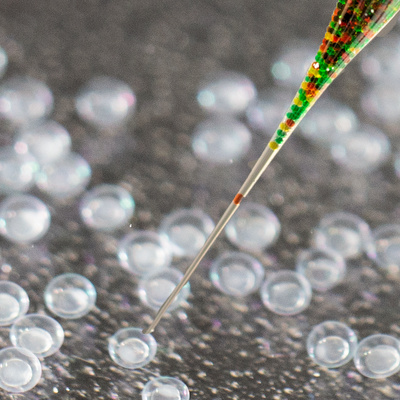April 7, 2022 -- Love cats but have allergies? Rejoice! Scientists have demonstrated that CRISPR gene editing of the cat allergen, Felis domesticus allergen I (Fel d 1), could bring relief to those with cat allergies, according to a proof-of-concept study published online in the CRISPR Journal.
The researchers, led by Nicole Brackett, PhD, of biotech firm InBio in Charlottesville, VA, found that Fel d 1 was a viable candidate for gene deletion, showing that CRISPR can be used as a potential genetic therapy to suppress the release of cat allergens.
"Our data indicate that Fel d 1 is both a rational and viable candidate for gene deletion, which may profoundly benefit cat allergy sufferers by removing the major allergen at the source," the authors concluded.
Allergy trouble
It is estimated that about 15% of the population has allergies to the domestic cat, with symptoms ranging from sneezing to severe asthma. Furthermore, research led by scientists at the National Institutes of Health attributed more than 500,000 asthma attacks per year to patients who were sensitized and exposed to cat allergen.
Previous research has also identified the culprit behind the allergies: the protein Fel d 1, which is shed by all cats. However, currently there are no real treatments. Someone with allergies can try to alleviate symptoms by using antihistamines, for example, or may try cat allergen immunotherapy, a treatment whose results have been inconsistent thus far.
Fel d 1: A history
In the current study, the researchers performed sequence and structural analyses of the Fel d 1 gene from 50 domestic cats to pinpoint conserved coding regions suitable for CRISPR editing.
Further comparisons to genes in eight exotic (nondomestic) felide species (Chinese mountain cat, black-footed cat, leopard cat, fishing cat, cougar, Iberian lynx, Bengal tiger, and African lion) revealed a high degree of variation, suggesting that Fel d 1 is nonessential for cats, given the apparent lack of evolutionary conservation.
"Though the precise biologic function of Fel d 1 remains unknown, our data indicate that the variants or amino acid substitutions are concentrated at the protein dimer interface, suggesting that this region of Fel d 1 is not well conserved and potentially nonessential," the authors wrote.
The researchers then proceeded to use CRISPR-Cas9 to disrupt Fel d 1 by CRISPR induced frameshift mutation. To perform the editing, ten CRISPR single guide RNAs and the Cas9 nuclease were delivered to immortalized feline epithelial cells as ribonucleoprotein complexes using lipid-based transfection.
Following the gene knockout, assessment by DNA sequence decomposition and enzymatic detection of nucleotide mismatches found no evidence of editing at predicted potential off-target sites.
In the future, the researchers will attempt in vivo replication of the CRISPR knockouts in live cats as a genetic therapy to block the release of cat allergens, which would effectively render the cats hypoallergenic.
The authors noted that such results would not be unprecedented, since "genetic engineering" by means of selective breeding to create interspecies hybrids has a long history.
Copyright © 2022 scienceboard.net








